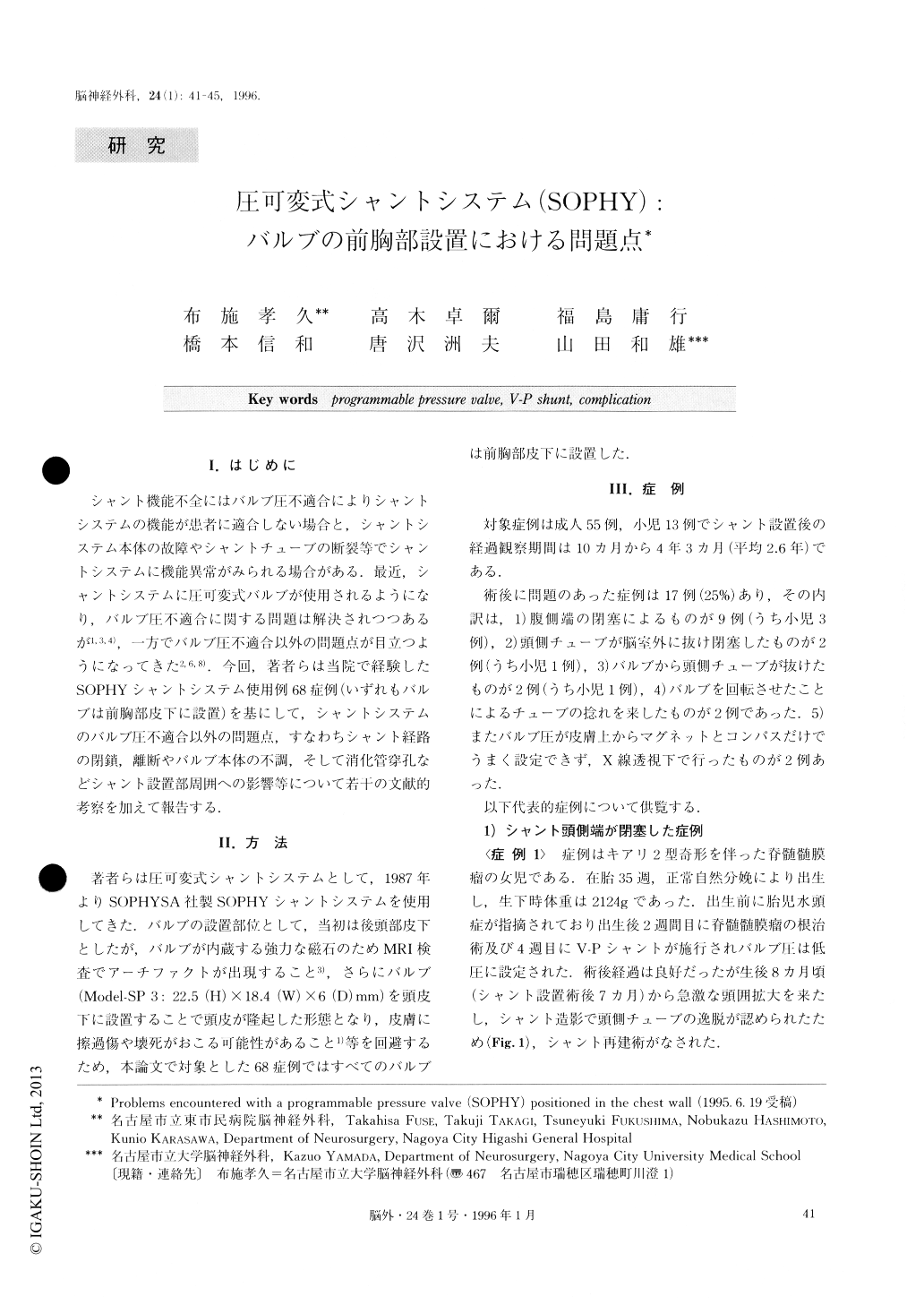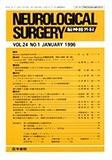Japanese
English
- 有料閲覧
- Abstract 文献概要
- 1ページ目 Look Inside
I.はじめに
シャント機能不全にはパルプ圧不適合によりシャントシステムの機能が患者に適合しない場合と,シャントシステム本体の故障やシャントチューブの断裂等でシャントシステムに機能異常がみられる場合がある.最近,シャントシステムに圧可変式バルブが使用されるようになり,バルブ圧不適合に関する問題は解決されつつあるが1,3,4),一方でバルブ圧不適合以外の問題点が目立つようになってきた2,6,8).今回,著者らは当院で経験したSOPHYシャントシステム使用例68症例(いずれもバルブは前胸部皮下に設置)を基にして,シャントシステムのバルブ圧不適合以外の問題点,すなわちシャント経路の閉鎖,離断やバルブ本体の不調,そして消化管穿孔などシャント設置部周囲への影響等について若干の文献的考察を加えて報告する.
Sixty-eight hydrocephalic patients were treated with a shunt system that incorporated a SOPHY programm-able valve.
This device is very effective for treating disorders of CSF circulation. However, when the valve is placed on the scalp, it produces artifacts on MR imaging due to its small magnetic rotor, and may cause necrosis of the scalp above it. On the other hand, when it is positioned on the chest, MR artifacts decrease and exchanging the valve desices becomes easier. Therefore, we have posi-tioned the device on the chest.
However, some complications were encountered, such as the turning over of the valve in the sub-cutaneous pocket and the twisting of the shunt tube.Moreover, the shunt tube may stretch due to growth of the neck during development in infantile patients or ex-tension of the neck during exercise. These complica-tions are associated only with subcutaneous placement on the chest, so we conclude that such a valve, if placed on the chest, should be placed in a lower posi-tion on the chest, and if MR examination will not be performed in the foreseeable future, we recommend that it be placed on the occipital scalp, especially in in-fantile patients.

Copyright © 1996, Igaku-Shoin Ltd. All rights reserved.


